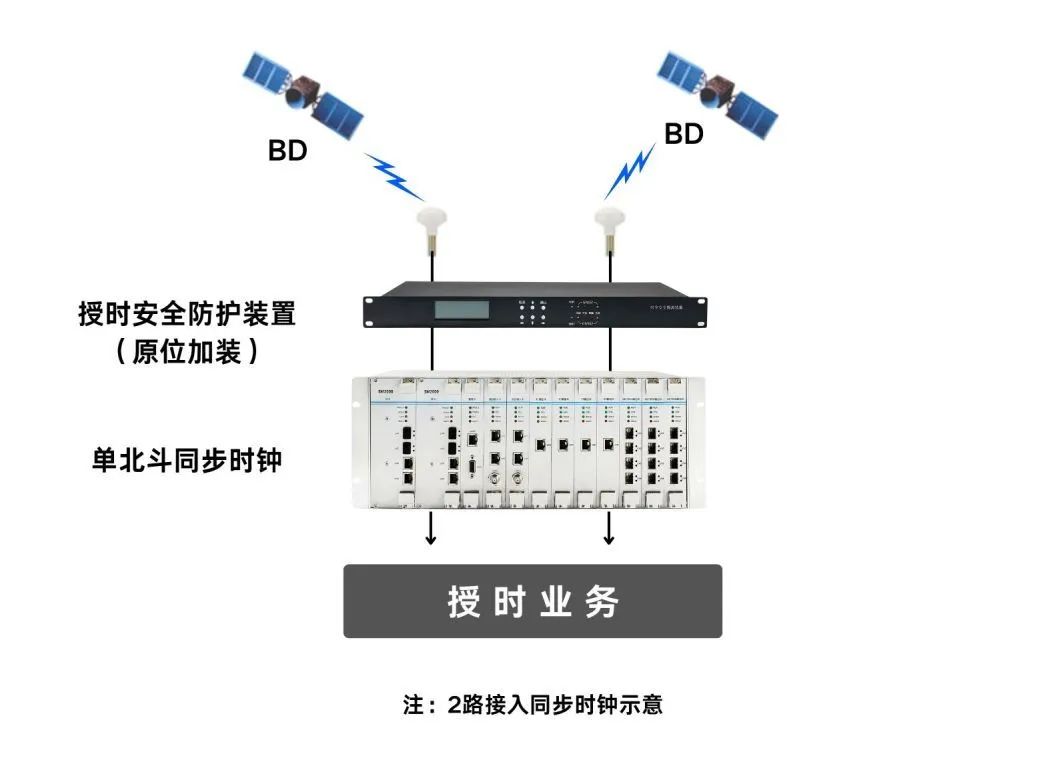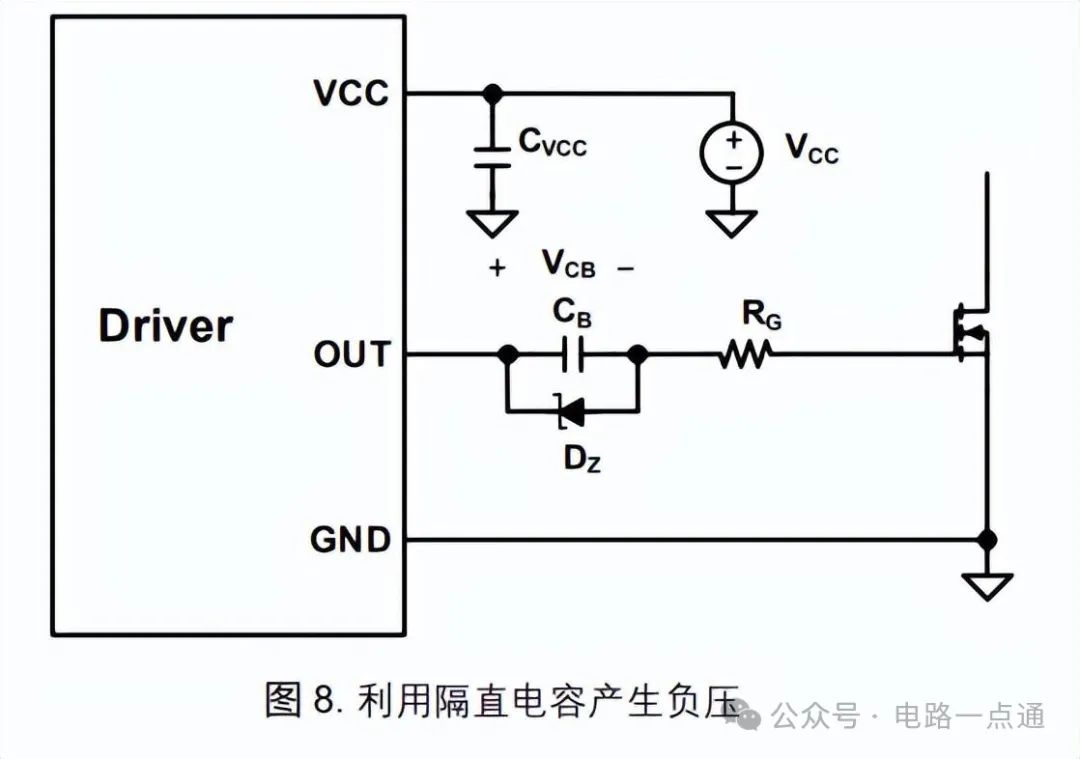一、为什么学习string类?
1.1 C语言中的字符串
C语言中,字符串是以'\0'结尾的一些字符的集合,为了操作方便,C标准库中提供了一些str系列
的库函数,但是这些库函数与字符串是分离开的,不太符合OOP的思想,而且底层空间需要用户
自己管理,稍不留神可能还会越界访问。
1.2 实践中
在OJ中,有关字符串的题目基本以string类的形式出现,而且在常规工作中,为了简单、方便、
快捷,基本都使用string类,很少有人去使用C库中的字符串操作函数。
二、 标准库中的string类
2.1 string类(了解)
string类的文档介绍
string类是归属于C++标准库的组件,由于string出现时间早于STL,因此string没有出现在STL中,不过实际上string就是管理的字符的一种容器(可以存储和管理多个数据元素的数据结构,string底层主要用数组管理数据),string也是可以归到STL容器内的,与vector、list等类似。
在使用string类时,必须包含#include<string>头文件以及using namespace std;
class string
{
private:
char* _str;
size_t _size;
size_t _capacity;
};对于string的底层结构,大家可以简单的理解为有一个管理字符数组的指针,记录字符串大小的size,以及记录已开辟的空间大小的capacity,当然实际的string绝不可能这么简单,不过到目前的学习,大家先这么理解就可以了。

我们通过文档看到string底层是一个模板实例化的类型,通过typedef将实例化的类重命名为string,之所以会出现模板实例化,是因为要支持不同的编码形式(万国码),我们常用的string类支持UTF-8的编码。
2.2 auto和范围for
auto关键字
在这里补充2个C++11的小语法,方便我们后面的学习。
在早期C/C++中auto的含义是:使用auto修饰的变量,是具有自动存储器的局部变量,后来这个不重要了(因为后面栈上的变量都是自动释放,因此auto就被废弃了。)
C++11中,标准委员会变废为宝赋予了auto全新的含义即:auto不再是一个存储类型指示符,而是作为一个新的类型指示符来指示编译器,即auto声明的变量的类型必须由编译器在编译时期推导而得。也就是说auto声明的变量会根据我们给它的数据,由编译器来确定它的类型,因此类型包含“auto”的符号必须初始化(不初始化,编译器无法推导类型,不知道对应存储空间开多大)
#include<iostream>
using namespace std;
int func1()
{
return 10;
}
int main()
{
int a = 10;
auto b = a;//b是a赋值得到的,编译器推导b类型是int
auto c = 'a';//编译器推导c类型是char
auto d = func1();//根据函数返回值推导类型
// 编译报错:rror C3531: “e”: 类型包含“auto”的符号必须具有初始值设定项
auto e;
cout << typeid(b).name() << endl;//查看变量的类型
cout << typeid(c).name() << endl;
cout << typeid(d).name() << endl;
return 0;
}
注:auto声明的变量或对象的类型是编译器推导的,当遇到陌生的类型时,我们可以使用typeid(对象).name来查看类型。
用auto声明指针类型时,用auto和auto*,auto*给的数据必须是指针,其他没有任何区别,但用auto声明引用类型时则必须加&
int main()
{
int x = 10;
auto y = &x;//可以推导指针类型
auto* z = &x;
auto& m = x;
cout << typeid(x).name() << endl;//查看变量的类型
cout << typeid(y).name() << endl;
cout << typeid(z).name() << endl;
return 0;
}当在同一行声明多个变量时,这些变量必须是相同的类型,否则编译器将会报错,因为编译器实际只对第一个类型进行推导,然后用推导出来的类型定义其他变量。
int main()
{
auto aa = 1, bb = 2;
// 编译报错:error C3538: 在声明符列表中,“auto”必须始终推导为同一类型
auto cc = 3, dd = 4.0;
return 0;
}auto不能作为函数的参数,可以做返回值,但是建议谨慎使用
// 不能做参数
void func2(auto a)
{}
// 可以做返回值,但是建议谨慎使用
auto func3()
{
return 3;
}
之所以建议大家谨慎使用是因为会出现上图中套娃的情况。因为要进行一些操作时,我们往往是需要明确变量或对象的类型的,而对于上图这种情况,我们想确定类型,就必须一层一层函数的查阅,非常不便。(插一句,这里auto的语法,C++其实是借鉴的python的语法)
auto不能直接用来声明数组
#include<iostream>
using namespace std;
int main()
{
// 编译报错:error C3318: “auto []”: 数组不能具有其中包含“auto”的元素类型
auto array[] = { 4, 5, 6 };
return 0;
}
看了上述例子,读者可能会觉得用auto来推导变量的类型似乎没事用处啊,确实,auto的真正的价值并不在推导内置类型。随着模板等引入,以下段代码中的map为例,实例化出的类型非常长,我们就可以使用auto自动推导类型,可以少敲不少字母,auto的价值就在于便利。
注:对于不熟悉相关语法的人来说,使用auto隐藏了真实类型,无法知道真实类型,其实降低了可读性。
#include<iostream>
#include <string>
#include <map>
int main()
{
std::map<std::string, std::string> dict = { { "apple", "苹果" },{ "orange",
"橙子" }, {"pear","梨"} };
// auto的用武之地
//std::map<std::string, std::string>::iterator it = dict.begin();//类型名非常长
auto it = dict.begin();//使用自动推导非常方便
while (it != dict.end())
{
cout << it->first << ":" << it->second << endl;
++it;
}
return 0;
}范围for
对于一个有范围的集合而言,由程序员来说明循环的范围是多余的,有时候还会容易犯错误。
因此C++11中引入了基于范围的for循环。for循环后的括号由冒号“ :”分为两部分:第一部分是范围内用于迭代的变量,变量类型使用内置类型或auto推导都可以,对于空间较大的自定义类型,类型一般使用引用来减少开销;第二部分则表示被迭代的范围。
范围for自动迭代,自动取数据,自动判断结束。
范围for可以作用到数组和容器对象上进行遍历
范围for的底层很简单,容器遍历实际就是替换为迭代器,这个从汇编层也可以看到,因此可以使用iterator迭代的容器,就可以使用范围for。
#include<iostream>
#include <string>
#include <map>
using namespace std;
int main()
{
int array[] = { 1, 2, 3, 4, 5 };
// C++98的遍历
for (int i = 0; i < sizeof(array) / sizeof(array[0]); ++i)
{
array[i] *= 2;
}
for (int i = 0; i < sizeof(array) / sizeof(array[0]); ++i)
{
cout << array[i] << endl;
}
// C++11的遍历
for (auto& e : array)
e *= 2;
for (auto e : array)
cout << e << " " << endl;
for (char e : array)
cout << e << " " << endl;
string str("hello world");
for (auto ch : str)
{
cout << ch << " ";
}
cout << endl;
return 0;
}2.3 string类的常用接口说明
1. string类对象的常见构造
| (constructor)函数名称 | 功能说明 |
|---|---|
| string() (重点) | 构造空的string类对象,即空字符串,包含'\0' |
| string(const string&s) (重点) | 拷贝构造函数.用string构造 |
| string (const string& str,size_t pos,size_t len = npos) | 从string的pos位置开始拷贝,取输入个数的字符构造string,如果个数超过pos到结尾的字符数,则拷贝pos到结尾所有字符 |
| string(const char* s,size_t n) (重点) | 用C语言字符串中首字符开始的n个数来构造string类对象 |
| string(const char* s) (重点) | 用C语言字符串来构造string类对象 |
| string(size_t n, char c) | string类对象中包含n个字符c |
template <class InputIterator> string (InputIterator first, InputIterator last); | 用first迭代器到last迭代器指向的这一段空间的数据来构造string |

#define _CRT_SECURE_NO_WARNINGS 1
#include<iostream>
#include<string>
using namespace std;
int main()
{
string s1;// 构造空的string类对象s1
string s2("hello world");// 用C格式字符串构造string类对象s2
string s3(s2);// 拷贝构造s3
cout << s1 << endl;
cout << s2 << endl;
cout << s3 << endl;
string s4(s2, 6, 15);//从s2第6个字符开始拷贝5个字符进行构造
cout << s4 << endl;
string s5(s2, 6);//从第6个字符一直拷贝到最后
//第三参数不传参,使用缺省参数npos,一直拷贝到结尾。
cout << s5 << endl;
string s6("hello world", 5);//从字符串第5个字符开始拷贝
cout << s6 << endl;
string s7(10, 'X');//用10个X构造
cout << s7 << endl;
return 0;
}注:npos是类中定义的静态变量,npos的值是-1,不过由于npos的类型是size_t,因此npos的实际含义是一个极大的数,在string构造函数中,npos作为默认参数传入,表示的是当要拷贝的数据个数极大,一定超过数组原长,这样string就会从当前pos位置开始,一直拷贝到结尾。
2. string类对象的容量操作
| 函数名称 | 功能说明 |
|---|---|
| size(重点) | 返回字符串有效字符长度 |
| length | 返回字符串有效字符长度 |
| capacity | 返回空间总大小 |
| empty (重点) | 检测字符串释放为空串,是返回true,否则返回false |
| clear (重点) | 清空有效字符,当前字符变成空字符(还有'\0') |
| reserve (重点) | 为字符串预留空间 |
| resize (重点) | 调整字符串大小,将有效字符的个数改成n个,n大于字符串,多出的空间用字符c填充, |
#define _CRT_SECURE_NO_WARNINGS
#include <iostream>
using namespace std;
#include <string>
// 测试string容量相关的接口
// size/clear/resize
void Teststring1()
{
// 注意:string类对象支持直接用cin和cout进行输入和输出
string s("hello, bit!!!");
cout << s.size() << endl;
cout << s.length() << endl;
cout << s.capacity() << endl;
cout << s << endl;
// 将s中的字符串清空,注意清空时只是将size清0,不改变底层空间的大小
s.clear();
cout << s.size() << endl;
cout << s.capacity() << endl;
// 将s中有效字符个数增加到10个,多出位置用'a'进行填充,已有位置的字符不变
// “aaaaaaaaaa”
s.resize(10, 'a');
cout << s.size() << endl;
cout << s.capacity() << endl;
// 将s中有效字符个数增加到15个,多出位置用缺省值'\0'进行填充
// "aaaaaaaaaa\0\0\0\0\0"
// 注意此时s中有效字符个数已经增加到15个
s.resize(15);
cout << s.size() << endl;
cout << s.capacity() << endl;
cout << s << endl;
// 将s中有效字符个数缩小到5个,就是删除第五个之后的字符
s.resize(5);
cout << s.size() << endl;
cout << s.capacity() << endl;
cout << s << endl;
}
//====================================================================================
void Teststring2()
{
string s;
// 测试reserve是否会改变string中有效元素个数
s.reserve(100);
cout << s.size() << endl;
cout << s.capacity() << endl;
// 测试reserve参数小于string的底层空间大小时,是否会将空间缩小
s.reserve(50);
cout << s.size() << endl;
cout << s.capacity() << endl;
}

1. size()与length()方法底层实现原理完全相同,引入size()的原因是为了与其他容器的接
口保持一致(string的出现时间早于STL,属于历史遗留问题了,因为要向前兼容,所以也不可能取消lengthl),一般情况下基本都是用size()。2. clear()只是将string中有效字符清空(还有空字符),不改变底层空间大小。
3. resize(size_t n) 与 resize(size_t n, char c)都是将字符串中有效字符个数改变到n个,不
同的是当字符个数增多时:resize(n)用0来填充多出的元素空间,resize(size_t n, char
c)用字符c来填充多出的元素空间。注意:resize在改变元素个数时,如果是将元素个数
增多,可能会改变底层容量的大小,如果是将元素个数减少,底层空间总大小不变。4. reserve(size_t res_arg=0):为string预留空间,不改变有效元素个数,当reserve的参
数小于string的底层空间总大小时,reserver不一定改变容量大小。
2.1reserve与capacity相关问题说明(了解)
class string
{
private:
char _buff[16];
char* _str;
size_t _size;
size_t _capacity;
};string内开辟的空间实际上是始终会留一个字节存储’\0‘,也就是说capacity记录的空间比实际空间少一个。
除此之外,为了避免太多小块内存出现在栈上,造成太多的空隙,以及一开始字符串较短,频繁的扩容,导致浪费,VS下string内部有一个buff专门来处理较短的字符串,当字符长度超过buff,string舍弃buff,两倍扩容一块新空间存储字符,之后每一次扩容都按1.5倍扩容(始终有一个字节存'\0')。
g++(4.8)这一块下没有这个buff,扩容也是按照二倍扩的。

3. string类对象的访问及遍历操作
| 函数名称 | 功能说明 |
|---|---|
| operator[] (重 点) | 返回pos位置的字符的引用 |
| begin+ end | 正向访问,begin获取一个指向字符串开始位置的正向迭代器 + end获取最后一个指向字符串下一个位置的正向迭代器 |
| rbegin + rend | 逆向访问,rbegin获取一个指向字符串最后一个字符的反向迭代器 + rend获取一个指向字符开始位置的前一个位置的反向迭代器 |
| 范围for | C++11支持更简洁的范围for的新遍历方式 |
注:需要注意的是STL中begin、end等获取迭代器的范围都是[begin,end)。
3.1operator[]访问

char& operator[](size_t i)//返回值给引用,可以从外部修改字符串
{
assert(i < _size);//防止越界访问
return _str[i];
}
void Teststring3()
{
string s1;
string s2("hello world");
cout << s1 << s2 << endl;
s2[0] = 'x';
cout << s1 << s2 << endl;
// 1、下标 + []
for (size_t i = 0; i < s2.size(); i++)
{
cout << s2[i] << " ";
}
cout << endl;
}string类通过函数重载的方式,重载了[],函数的返回值是引用,我们可以从外部修改内部的值,我们就可以像数组[]一样访问string对象,而且由于这是通过重载实现的,我们在函数内部可以加上断言等检查机制,[]的使用安全性也大大提升。因此,string类我们常常使用[]的形式进行访问。
3.2迭代器访问
迭代器的简介
迭代器iterator是属于STL中的迭代器组件,在C语言中我们想通过迭代方式去访问顺序表、链表等不同结构,有的通过for+下标就行,有的要解引用访问内部的指针,总的来说C语言阶段,对于不同的变量,我们想要使用迭代,往往是需要了解变量内部的结构,还要知道对应结构的迭代方式,这是非常不方便的。
到了C++阶段,面对繁多以及严格分装的的容器、适配器等,,想要了解内部的结构,并采取对应的迭代的方式,是非常困难,低效的方式。
因此秉持一贯的封装思想,C++提供了一种近似指针的统一迭代方式iterator迭代器,因此之后,所有的容器都可以通过迭代器近似一模一样迭代访问(由于底层结构不同,尽管都是封装成迭代器,但是不同迭代器所能支持的操作还是有所区别,本文对此不过多介绍,之后进一步深入STL,再做介绍)。
迭代器的本身就是封装的产物,对于底层是顺序表的结构,简单理解就是用原生的指针封装一下,对于链表等存储空间不连续的结构来说,迭代器的底层就复杂了,不过本文对此不过多讲解。
迭代器又可以分为正向和反向迭代器,普通迭代器跟const迭代器。(const对象用const迭代器)

到目前为止,可以简单将string的迭代器理解为类似指针的东西。
void test_string2()
{
string s2("hello world");
string::iterator it = s2.begin();//正向普通迭代器
while (it != s2.end())
{
*it += 2;
cout << *it << " ";
++it;//正向迭代器++,往字符串尾走
}
cout << endl;
string s3("hello world");
string::reverse_iterator rit = s3.rbegin();//反向普通迭代器
while (rit != s3.rend())
{
cout << *rit << " ";
++rit;//反向迭代器++,往字符串头走
}
cout << endl;
const string s4("hello world");
//string::const_iterator cit = s3.begin();//正向const迭代器
auto cit = s4.begin();
while (cit != s4.end())
{
//*cit += 2; //const 迭代器无法从外部修改数据
cout << *cit << " ";
++cit;
}
cout << endl;
const string s5("hello world");
//string::const_reverse_iterator rcit = s3.rbegin();反向const迭代器
auto rcit = s5.rbegin();
while (rcit != s5.rend())
{
// *rcit += 2;
cout << *rcit << " ";
++rcit;
}
cout << endl;
}
int main() {
test_string2();
return 0;
}![]()

3.3范围for的访问
#define _CRT_SECURE_NO_WARNINGS
#include <iostream>
using namespace std;
#include <string>
// string的遍历
// begin()+end() for+[] 范围for
// 注意:string遍历时使用最多的还是for+下标 或者 范围for(C++11后才支持)
// begin()+end()大多数使用在需要使用STL提供的算法操作string时,比如:采用reverse逆置string
void Teststring4()
{
string s("hello Bit");
// 3种遍历方式:
// 需要注意的以下三种方式除了遍历string对象,还可以遍历是修改string中的字符,
// 另外以下三种方式对于string而言,第一种使用最多
// 1. for+operator[]
for (size_t i = 0; i < s.size(); ++i)
cout << s[i] << endl;
// 2.迭代器
string::iterator it = s.begin();
while (it != s.end())
{
cout << *it << endl;
++it;
}
// string::reverse_iterator rit = s.rbegin();
// C++11之后,直接使用auto定义迭代器,让编译器推到迭代器的类型
auto rit = s.rbegin();
while (rit != s.rend())
cout << *rit << endl;
// 3.范围for
for (auto ch : s)
cout << ch << endl;
}4. string类对象的修改操作
| 函数名称 | 功能说明 |
| push_back | 在字符串后尾插字符c |
| append | 在字符串后追加一个字符串 |
| operator+= (重 点) | 在字符串后追加字符串str,底层就是使用push_back实现的 |
| c_str(重点) | 返回C格式字符串,类似于网络等,很多借口都是C语言的格式,c_str可以帮助很好的兼容 |
| find + npos(重 点) | 从字符串pos位置开始往后找字符c,返回该字符在字符串中的位置 |
| rfind | 从字符串pos位置开始往前找字符c,返回该字符在字符串中的 位置 |
| substr | 在str中从pos位置开始,截取n个字符,构造新string,然后将其返回 |
#define _CRT_SECURE_NO_WARNINGS
#include <iostream>
using namespace std;
#include <string>
// 利用reserve提高插入数据的效率,避免增容带来的开销
//====================================================================================
void TestPushBack()
{
string s;
size_t sz = s.capacity();
cout << "making s grow:\n";
for (int i = 0; i < 100; ++i)
{
s.push_back('c');
if (sz != s.capacity())
{
sz = s.capacity();
cout << "capacity changed: " << sz << '\n';
}
}
}
// 构建vector时,如果提前已经知道string中大概要放多少个元素,可以提前将string中空间设置好
void TestPushBackReserve()
{
string s;
s.reserve(100);
size_t sz = s.capacity();
cout << "making s grow:\n";
for (int i = 0; i < 100; ++i)
{
s.push_back('c');
if (sz != s.capacity())
{
sz = s.capacity();
cout << "capacity changed: " << sz << '\n';
}
}
}
//
// 测试string:
// 1. 插入(拼接)方式:push_back append operator+=
// 2. 正向和反向查找:find() + rfind()
// 3. 截取子串:substr()
// 4. 删除:erase
void Teststring5()
{
string str;
str.push_back(' '); // 在str后插入空格
str.append("hello"); // 在str后追加一个字符"hello"
str += 'b'; // 在str后追加一个字符'b'
str += "it"; // 在str后追加一个字符串"it"
cout << str << endl;
cout << str.c_str() << endl; // 以C语言的方式打印字符串
// 获取file的后缀
string file("string.cpp");
size_t pos = file.rfind('.');
string suffix(file.substr(pos, file.size() - pos));
cout << suffix << endl;
// npos是string里面的一个静态成员变量
// static const size_t npos = -1;
// 取出url中的域名
string url("http://www.cplusplus.com/reference/string/string/find/");
cout << url << endl;
size_t start = url.find("://");
if (start == string::npos)
{
cout << "invalid url" << endl;
return;
}
start += 3;
size_t finish = url.find('/', start);
string address = url.substr(start, finish - start);
cout << address << endl;
// 删除url的协议前缀
pos = url.find("://");
url.erase(0, pos + 3);
cout << url << endl;
}
int main()
{
return 0;
}| 函数名称 | 功能说明 |
|---|---|
| insert | 在任意位置插入字符或字符串 |
| erase | 在任意位置删除字符或字符串 |
| replace | 替换任意位置字符或字符串为其他字符或字符串 |
| find_first_of | 在目标字符串从头向尾,找到给定字符串中任意字符,并返回第一个找到的字符的位置 |
| find_last_of | 在目标字符串从尾向头,找到给定字符串中任意字符,并返回第一个找到的字符的位置 |
| find_first_not_of | 在目标字符串从头向尾,找到给定字符串之外的任意字符,并返回第一个找到的字符的位置 |
| find_las_not_of | 在目标字符串从尾向头,找到给定字符串之外的任意字符,并返回第一个找到的字符的位置 |
void test_string5()
{
string s("hello world");
s.insert(0, "hello bit ");//在任意位置插入
cout << s << endl;
s.insert(10, "zzzz");
cout << s << endl;
s.insert(0, "p");
cout << s << endl;
char ch = 't';
s.insert(0, 1, ch);
s.insert(s.begin(), ch);
cout << s << endl;
}
void test_string6()
{
string s("hello world");
s.erase(6, 1);//删除任意位置的字符
cout << s << endl;
// 头删
s.erase(0, 1);
cout << s << endl;
s.erase(s.begin());
cout << s << endl;
// 尾删
s.erase(--s.end());
cout << s << endl;
s.erase(s.size() - 1, 1);
cout << s << endl;
string ss("hello world");
ss.erase(6);
cout << ss << endl;
string sss("hello world hello bit");
/*size_t pos = sss.find(' ');
while (pos != string::npos)
{
sss.replace(pos, 1, "%%");//将任意位置的给定字符进行替换
cout << sss << endl;
pos = sss.find(' ', pos+2);
}
cout << sss << endl;*/
//sss.replace(5, 1, "%%");
//cout << sss << endl;
string tmp;
tmp.reserve(sss.size());
for (auto ch : sss)
{
if (ch == ' ')
tmp += "%%";
else
tmp += ch;
}
cout << tmp << endl;
//sss = tmp;
sss.swap(tmp);
cout << sss << endl;
string file;
cin >> file;
FILE* fout = fopen(file.c_str(), "r");
char ch = fgetc(fout);
while (ch != EOF)
{
cout << ch;
ch = fgetc(fout);
}
fclose(fout);
}
void SplitFilename(const std::string& str)
{
std::cout << "Splitting: " << str << '\n';
std::size_t found = str.find_last_of("/\\");//返回在"/\\"中找到的第一个字符
std::cout << " path: " << str.substr(0, found) << '\n';
std::cout << " file: " << str.substr(found + 1) << '\n';
}
void test_string7()
{
string s("test.cpp.zip");
size_t pos = s.rfind('.');
string suffix = s.substr(pos);
cout << suffix << endl;
std::string str("Please, replace the vowels in this sentence by asterisks.");
std::cout << str << '\n';
std::size_t found = str.find_first_not_of("abcdef");//返回不在“abcddef”中的第一个字符
while (found != std::string::npos)
{
str[found] = '*';
found = str.find_first_not_of("abcdef", found + 1);
}
std::cout << str << '\n';
std::string str1("/usr/bin/man");
SplitFilename(str1);
}注意:
1. 在string尾部追加字符时,s.push_back(c) / s.append(1, c) / s += 'c'三种的实现方式差
不多,一般情况下string类的+=操作用的比较多,+=操作不仅可以连接单个字符,还可
以连接字符串。
2. 对string操作时,如果能够大概预估到放多少字符,可以先通过reserve把空间预留
好。
5. string类非成员函数
| 函数 | 功能说明 |
|---|---|
| operator+ | 尽量少用,因为传值返回,导致深拷贝效率低 |
| operator>> (重点) | 输入运算符重载 |
| operator<< (重点) | 输出运算符重载 |
| getline (重点) | 获取一行字符串 |
| relational operators (重点) | 大小比较 |
上面的几个接口大家了解一下,下面的OJ题目中会有一些体现他们的使用。string类中还有
一些其他的操作,这里不一一列举,大家在需要用到时不明白了查文档即可。
void test_string8()
{
string s1("hello");
string s2 = s1 + "world";
cout << s2 << endl;
string s3 = "world" + s1;
cout << s3 << endl;
}三、牛刀小试
仅仅反转字母

class Solution {
public:
bool isLetter(char ch)
{
if (ch >= 'a' && ch <= 'z')
return true;
if (ch >= 'A' && ch <= 'Z')
return true;
return false;
}
string reverseOnlyLetters(string S) {
int begin = 0, end = S.size() - 1;
while (begin < end)
{
while (begin < end && !isLetter(S[begin]))//跳过非字母字符
++begin;
while (begin < end && !isLetter(S[end]))
--end;
swap(S[begin++], S[end--]);//反转字母字符
}
return S;
}
};
找字符串中第一个只出现一次的字符

class Solution {
public:
int firstUniqChar(string s) {
// 统计每个字符出现的次数
int count[256] = {0};//计数排序
for(auto ch : s){
count[ch]++;
}
for(int i = 0;i < s.size();i++){
// 按照字符次序从前往后找只出现一次的字符
if(1 == count[i])
return i;
}
return -1;
}
};字符串里最后一个字符串的长度

#include<iostream>
#include<string>
using namespace std;
int main()
{
string line;
// 不要使用cin>>line,因为会它遇到空格就结束了
// while(cin>>line)
while (getline(cin, line))//获取字符串
{
size_t pos = line.rfind(' ');//不同单词间有空格分割,refind从后往前找到第一个空格
//空格往后就是最后一个字符
cout << line.size() - pos - 1 << endl;
}
return 0;
}
验证一个字符串是否是回文

class Solution {
public:
bool isPalindrome(string s) {
string tmp;//存储转换完字符,去除其他字符后的字符串。
for(auto ch : s){
if(ch >= 'A' && ch <= 'Z'){
tmp += ch + 32;//大写字符转小写,并保留
}
else if(ch >= 'a' && ch <= 'z'){
tmp += ch;//保留小写字符
}
else if(ch >='0' && ch <= '9'){
tmp += ch;//保留数字字符
}
else{
continue;//去除其他字符
}
}
int left = 0;
int right = tmp.size() - 1;
while(left < right)
{
if(tmp[left++] != tmp[right--])//左右字符对比
{
return false;
}
}
return true;
}
};字符串相加

class Solution {
public:
string addStrings(string num1, string num2) {
int end1 = num1.size() - 1;
int end2 = num2.size() - 1;//模拟数学相加过程,不断取尾数
string tmp;//保存相加结果
int next = 0;//记录进位
while(end1 >= 0 || end2 >= 0)//长短字符串都结束才表示相加完成
{
int n1 = end1 < 0 ? 0 : num1[end1--] - '0';//取出尾数,如果短字符串已经取完,则给0
int n2 = end2 < 0 ? 0 : num2[end2--] - '0';//便于长字符继续取
int ret = n2 + n1 + next;//记录尾数相加结果
next = ret / 10;//得到进位
ret %= 10;//去掉进位
tmp += ret + '0';将
}
if(next)//字符串都取完,进位上还有数,我们将结果进位
tmp += next + '0';
reverse(tmp.begin(),tmp.end());//结果字符串是反的,我们反转一下
return tmp;
}
};注:需要额外说明的是因为字符串的底层是数组,在模拟相加过程中,如果每得到一个新相加结果,将结果头插在旧字符串中,需要挪动大量数据,效率低下,因此上述代码采用尾插的方式得到相加结果,最终得到的结果字符串是反的,我们需要调用algorithm库中reverse反转一下字符串再返回。
翻转字符串II:区间部分翻转

class Solution {
public:
string reverseStr(string s, int k) {
auto begin = s.begin();
auto end = s.end();
while(end - begin >= 2 * k){
reverse(begin,begin + k );
begin += 2 * k;
}
if(end - begin < k){
reverse(begin,end);
}
else if((end - begin) >= k && (end - begin) < 2 * k){
reverse(begin,begin + k );
}
return s;
}
};翻转字符串III:翻转字符串中的单词

class Solution {
public:
string reverseWords(string s) {
string tmp;
int prev = 0;//记录每个单词开始的位置
int cur = s.find(' ', prev);//记录当前空格的位置
if (cur < 0) //字符串中没有空格,说明只有一个单词,直接反转
{
reverse(s.begin(), s.end());
return s;
}
while (cur >= 0)
{
reverse(s.begin() + prev, s.begin() + cur);//反转每一个单词
prev = cur + 1;//当前空格的下一位即当前单词开始的位置
cur = s.find(' ', prev);//记录下一个单词前空格的位置
}
//最后一个单词之后没有空格,会跳出循环,我们需要手动反转一下。
reverse(s.begin() + prev, s.end());//反转最后一个单词
return s;
}
};



















